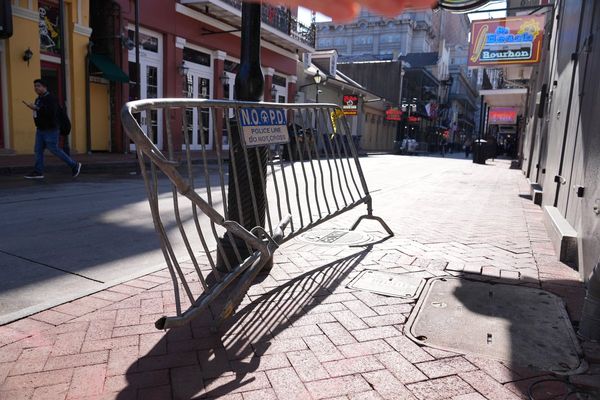
Nivå (Denmark) (AFP) - Two separated halves of a 17th century Flemish painting have gone on display together for the first time, reuniting the family portrayed 200 years after they were torn apart.
The two artworks, which were once one, now hang side-by-side at the Nivaagaard Collection museum in Denmark, only a sliver of wall dividing the woman from her husband and son.
Several clues in "Double Portrait of a Father and Son", created by Flemish painter Cornelis de Vos in 1626, suggested a woman may at one time have been present in the piece.
A mysterious shape can be seen on the lower right side of the painting, which has been part of the museum's collection since 1907.
"You can see something in here.This is a dress and a knee underneath, and a part of the chair," museum director Andrea Rygg Karberg told AFP.
After a meticulous investigation, art historians found the missing woman, dressed in black with a tall white neck collar, or ruff, like her husband.
"It's once in a lifetime that something like this happens.It's extraordinary to find the missing woman from a family portrait," Rygg Karberg explained.
The mother was found in "Portrait of a Lady", also dated 1626 by de Vos, which had been acquired at auction in 2014 by Dutch gallery owner Salomon Lilian, whose restoration uncovered a rural background.
It was thanks to a photo of the restored work published in an article that researcher Jorgen Wadum connected the dots.
"He suddenly realised, Wow, this is the missing mother.Because like in a puzzle, it fits totally with our work, with poplar trees and the sky in the background," the museum director said enthusiastically.
A grant from the New Carlsberg Foundation enabled the museum to acquire the portrait.
"It gives a good idea about what it was from the start," 80-year-old museum visitor Ole Juul tells AFP as he admires the artworks.
"So I just wanted to see these two paintings.I wonder why she was cut out of the big painting.What had she done?," he muses.
Rygg Karberg speculated it may have been cut after the canvas was damaged.
"My best guess is that there was damage in this lower corner of the painting, and then it was saved into two well-functioning works," Rygg Karberg said.
The researchers determined the painting was in one piece until at least 1830, with the first mention of "Double Portrait of a Father and Son" appearing in 1859, suggesting it was divided around that time.







